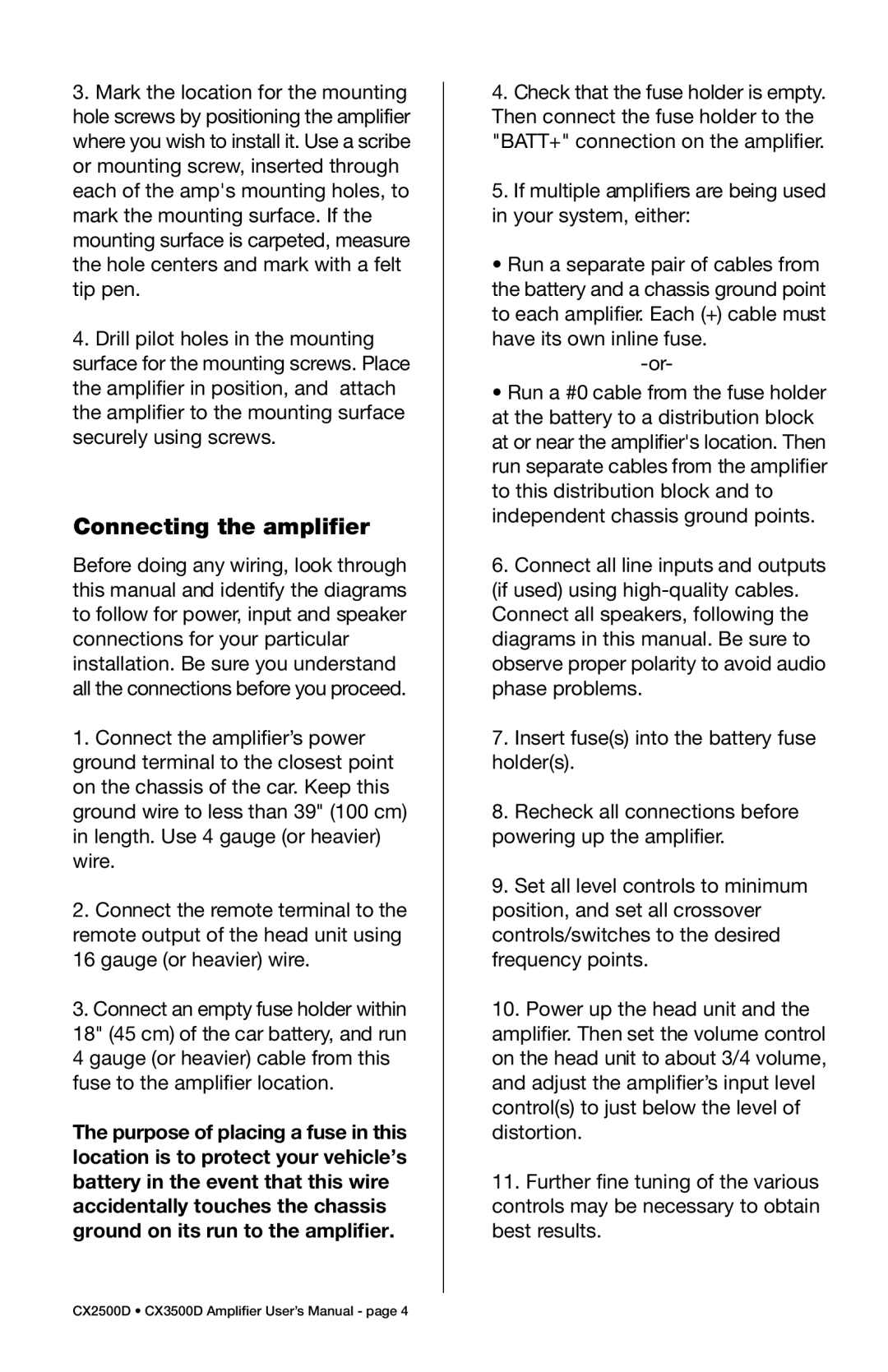CX3500D, CX2500D specifications
Boss Audio Systems has established itself as a leader in the realm of car audio, and its CX2500D and CX3500D mono amplifiers are testament to the brand's commitment to delivering powerful, high-quality sound. These amplifiers are designed for audiophiles who seek robust performance and flexibility in their sound systems.The Boss Audio CX2500D is a compact yet powerful amplifier, delivering up to 2500 watts of peak power. Its RMS rating of 1200 watts at 1 ohm ensures that it can drive most subwoofers efficiently, providing deep bass with minimal distortion. This model features a low-pass filter, allowing users to control the frequency response and tailor the audio output to match their specific subwoofer setup. Additionally, the CX2500D includes an adjustable bass boost, which allows for enhancing the low frequency output to add punch to music genres heavily reliant on bass.
On the other hand, the CX3500D takes performance up a notch with a peak power output of 3500 watts and an RMS power of 1800 watts at 1 ohm. This additional power makes it suitable for larger subwoofer systems or for those who desire even more thump in their audio experience. Both the CX2500D and CX3500D feature a super low-frequency response, ensuring that even the deepest bass notes are reproduced with clarity.
Boss Audio's unique technology also comes into play with their proprietary Mosfet power supply, which enhances efficiency while maintaining high performance. The built-in protection circuitry safeguards the amplifier against issues such as overheating, overload, and short circuits, ensuring long-term reliability while providing peace of mind to users.
Installation has been made easier with the inclusion of a variable input gain control, allowing for seamless integration into existing audio setups. These amplifiers are also designed with a sleek, modern aesthetic, featuring a durable chassis that can withstand the rigors of automotive environments.
Overall, the Boss Audio Systems CX2500D and CX3500D amplifiers are excellent choices for car audio enthusiasts. They not only boast impressive specifications but also incorporate advanced technologies that enhance audio quality and reliability. Whether you are building a new system or upgrading an existing one, these amplifiers provide the power and performance needed to deliver an unmatched listening experience.

